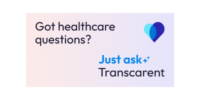Technical.ly October 19, 2021
For Black, brown and immigrant communities and those living in poverty, access to technology can also mean better health outcomes. Here’s what local experts say about what’s causing disparities — and what can be done to shrink them.
For the immigrants served by the Southwest Philadelphia-headquartered Coalition of African and Caribbean Communities (AFRICOM), health inequity doesn’t just look like the false stigmatization of immigrants as COVID-19 super spreaders or lessened access to food benefits programs — though it looks like those, too.
“Culturally, people continue to love one-on-one conversations and seeing the face...







